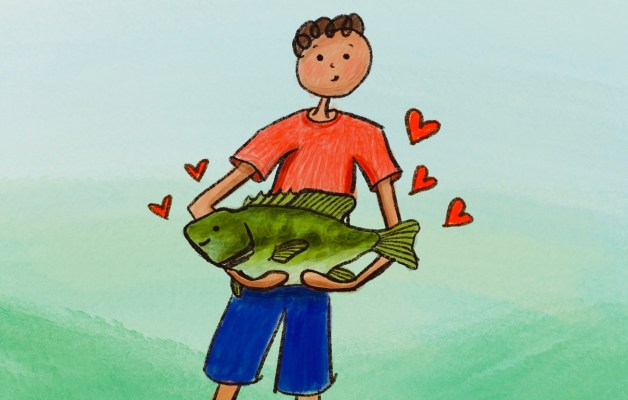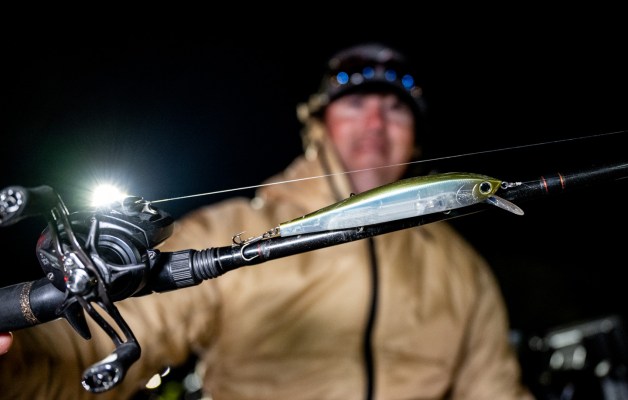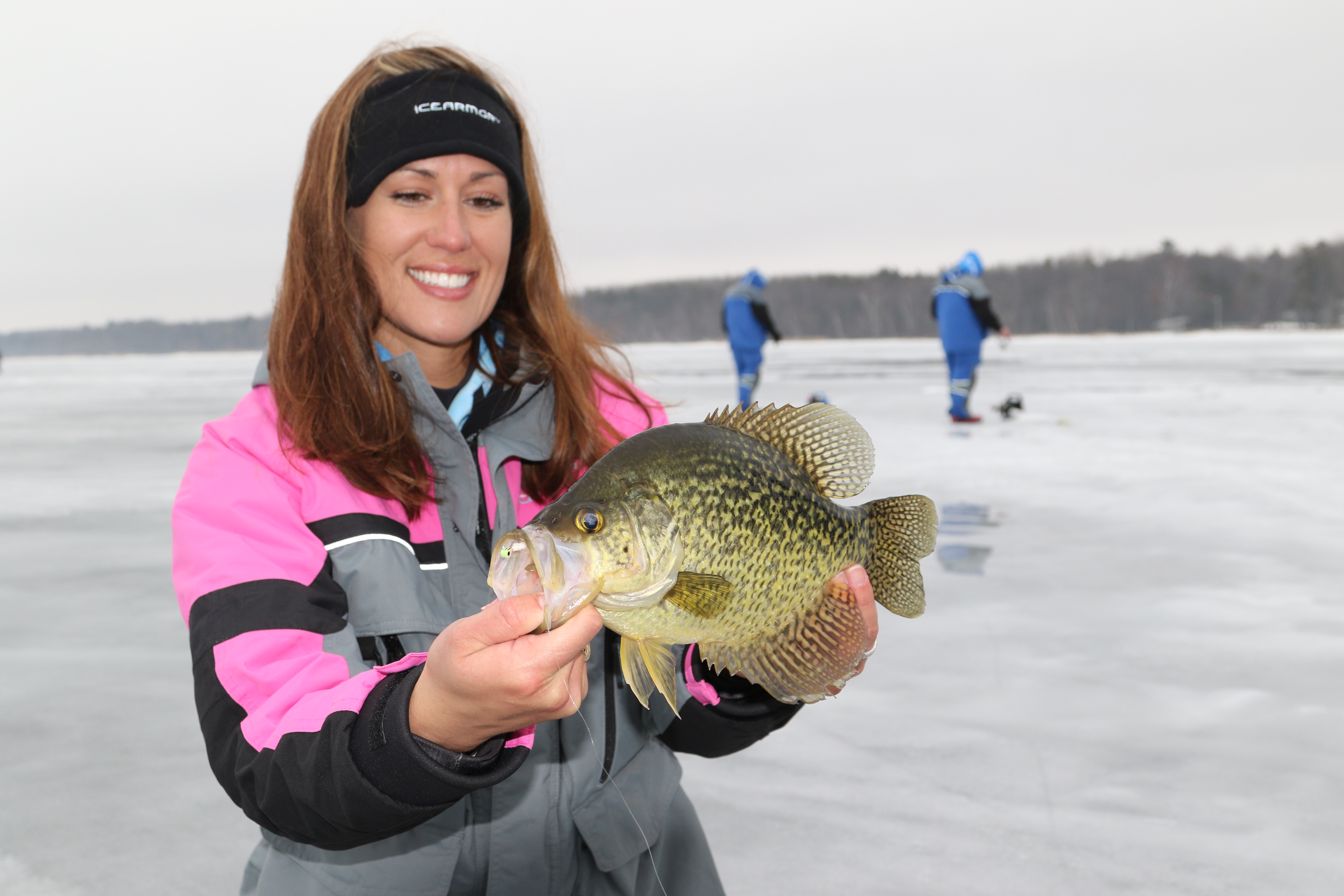
When I left for the airport, the temperature in Central Florida was about 55 degrees. The next morning, Northern Minnesota registered -20. Having never stood in anything below 30 degrees in my entire life, my only thought was, “What have I gotten myself into?”
About an hour later, my first ice fishing adventure had changed that thought to, “Wow, this is pretty cool.” (Pun intended.)
The crew I fished with included high-tech pros with snowmobiles, high-powered ice augers, pop-up shelters, sonar and underwater cameras. Such tools certainly help, but Chris Granrud of Rainy Daze Guide Service said ice fishing’s combination of easy access and relatively low entry point welcomes beginners.
“It can be a simpler sport; you don’t need to have a boat to go out and experience the fishing,” said Granrud, who guides on Minnesota’s Rainy Lake during open water and “hard water” seasons. “You can go old school and literally have an auger and an ice rod.
“I think ice fishing is very appealing to a broad audience because it can be very simple. You can just walk or drive out and fish with minimal gear.”
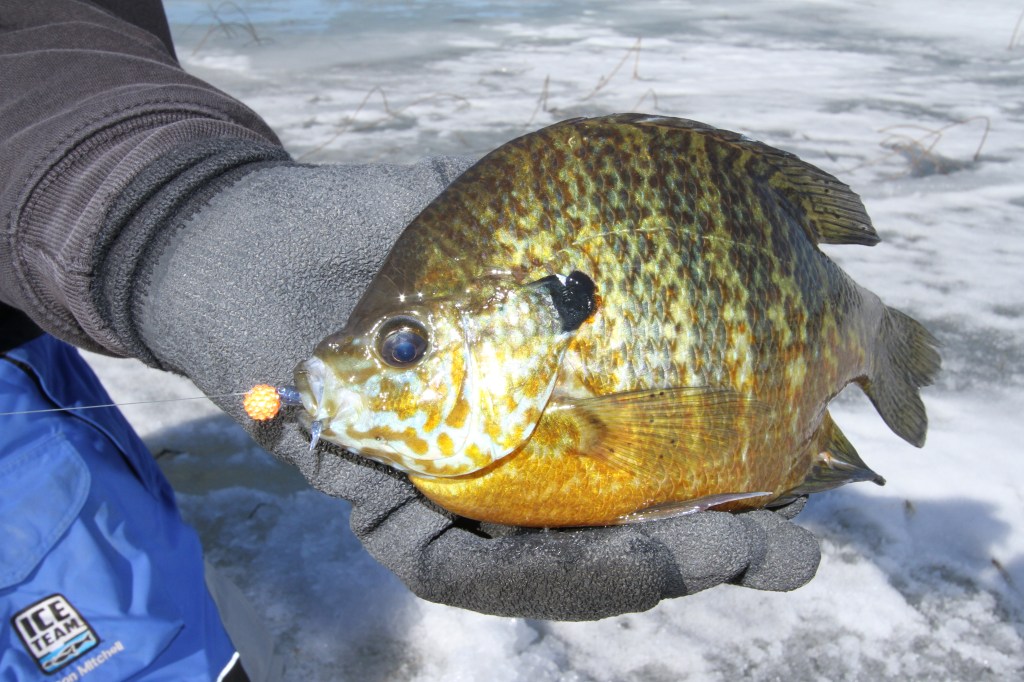
Location matters
From crappie, yellow perch, bluegill, and pumpkinseeds, to largemouth bass, walleye, and northern pike, the ice fishing menu basically mirrors what you’d find during open water. That means the same rules of site selection apply.
Specifics vary by location, but chose areas with convenient access points close to attractive natural features. Basically, fish want shelter/cover and they want to eat. Find this and you’re in business.
“Look at your (topographic) charts and find mid-lake structure, like rocks, weed lines, even deeper mud flats,” Granrud said.
Important to note: Simply finding ice on a lake or pond does not necessarily mean it’s safe for fishing. To help prevent breakthroughs, the Minnesota Department of Natural Resources publishes a guideline for safe ice thickness (https://www.dnr.state.mn.us/safety/ice/thickness.html).
This standard provides a good starting point, but Granrud suggests complementing this general information with local insight.
“The people that are plowing the roads (leading to ice fishing sites) can give you some information before you go out to let you know if it’s safe,” he said. “I always err on the side of caution because it may not be (a question of ice thickness); you could have slush problems on the lake, so be familiar with what you’re getting into.”
As Granrud notes, local bait shops and guides can provide helpful insight. Bottom line, know before you go.
What you need
Along with a good dose of ice safety (Ice fishing safety) awareness, a handful of considerations will improve your hard water experience.
Clothing: Mild, sunny days often find folks ice fishing in thick pants and hoodies, but consider that fish splashing and snowmelt can leave the ice with slushy areas. Kneeling in dampness is a good way to hasten hypothermia, so choose water resistant pants, or cover with slip-on rain pants.
For deep winter chill, you really need the heavy outerwear with an insulating base layer and multiple outer pieces that allow you to shed layers with warming conditions. Heavy duty hooded ice suits with articulated knees and elbows for unhindered motion
Hands Up: I’ve seen hard northern types reach bare handed into an ice hole to lift a fish. Me, I want gloves if the wind blows.
For novice ice anglers, some type of hand covering will make even those mild days more enjoyable. Just consider that soft, water absorbing materials will do more harm than good. Plenty of outdoor clothing manufacturers make a variety of styles and thicknesses for the ice.
Experienced ice anglers typically wear warming mittens over lighter, more tactile gloves — often with open fingertips
Footwear: On my first ice fishing trip, I wore the heaviest hiking boots I owned and doubled my socks, but still felt the chill through my soles. Keep in mind, this was a Floridian’s response, so folks who live where lakes freeze may have less trouble adjusting. Nevertheless, you won’t regret investing in insulated socks and boots made for the ice.
Whatever you wear, slip-on ice cleats provide the traction that allows secure footing on what can be a very slick surface.
Keep It Close: For your tackle containers, snacks/water, a hand towel, and maybe an extra sweatshirt, a backpack with a waterproof base will keep your gear dry.
For larger operations with multiple anglers, ice sleds pulled by hand or hitched to a snowmobile facilitate transportation. Sleds with seats and pop-up shelters offer a nice break from the elements, especially on a windy day.
Compact personal heaters keep the fingertips thawed and ready to respond to the next bite.
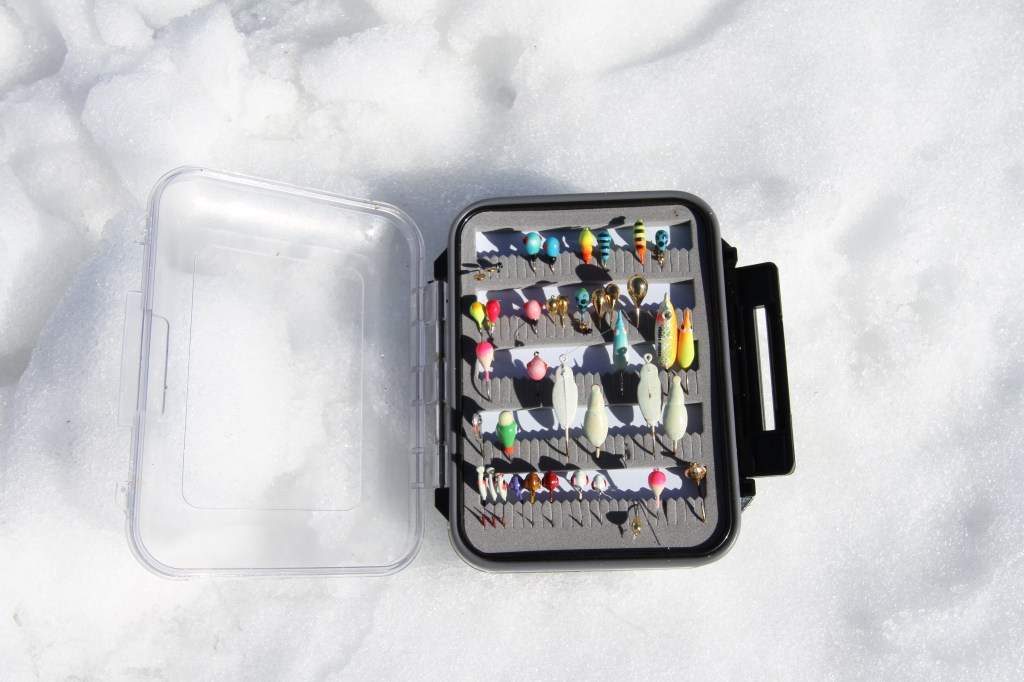
Tackle and tactics
The lack of casting, plus the proximity of kneeling by a hole in the ice, shorter rods are the way to go. Choose something in the 25- to 30-inch range and you’re set for anything you’ll hook. (A big fish is still a big fish, but winter lethargy takes the fight out of most.)
For the smaller panfish species, Granrud suggests an ultralight rod with good backbone and a flexible tip, a 500-series reel and 2-4 pound line. If you’re dreaming of something bigger, bump up to a medium or medium light rod with 10-pound braid and a 10- to 12-pound fluorocarbon leader.
Best Baits: Just like open waters of southern latitudes, winter leaves the food options slim beneath the ice, so no one’s getting fat on voluminous bait schools. That means even the big and bold will bite a modest offering.
Granrud suggests a light tungsten jig with either small plastic body or a few Euro larvae (maggots) impaled on the hook. For larger predators like walleye and pike, he’ll increase his jig size and replace maggots with a minnow. A spoon with a minnow head is another popular option.
When the bite is on, jigging those spoons or baitfish-mimicking rattlebaits will draw impressive bites from shivering fish. Occasionally, these highly visual, enticement baits will draw predators into range, but they simply won’t commit.
One possibility is that the attention getters are just more than they want at the moment. If that’s the case, use the flashy, noisy stuff to bring the fish close and then push them over the edge with a subtle jig and maggot combo.
Sometimes you make the basket; other times, you get credit for the assist. Either way, a catch is a catch.


